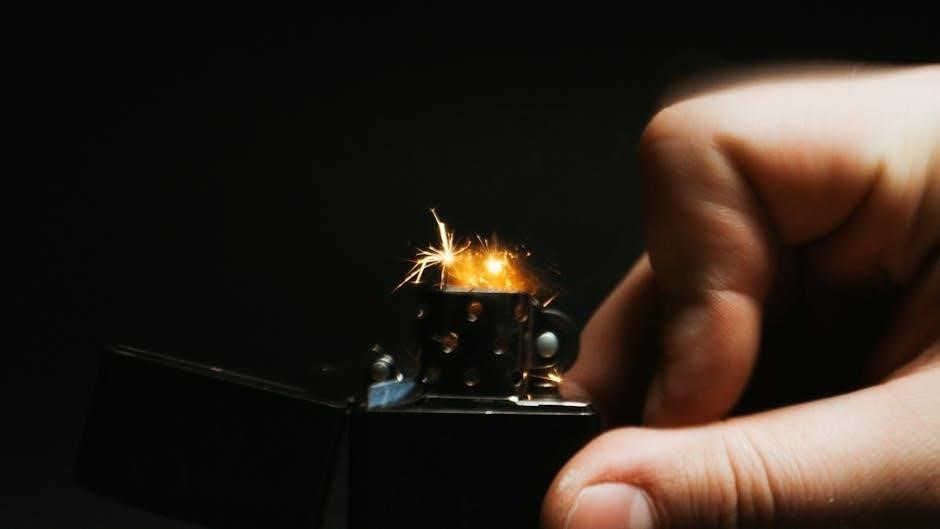Small manual SUVs offer a unique blend of versatility, efficiency, and driving engagement. With fewer options available, enthusiasts appreciate the control and connection manual transmissions provide, making these vehicles stand out in a market dominated by automatics.
Overview of Small SUVs
Small SUVs have gained immense popularity for their perfect blend of practicality, affordability, and versatility. These compact vehicles are ideal for city driving while offering enough space for passengers and cargo. Many small SUVs now come with advanced features, making them appealing to a wide range of buyers. However, the availability of manual transmissions in this segment has significantly declined, with only a few models still offering this option. The Subaru Crosstrek and Forester, for instance, are among the rare compact SUVs that provide a manual gearbox, catering to enthusiasts who prefer control over their driving experience. Similarly, models like the Mazda CX-5 and VW Tiguan have historically included manual options, though their availability varies by region and model year. Despite the trend toward automatics, small manual SUVs remain a niche but cherished choice for drivers seeking a more engaging and cost-effective vehicle.
Unique Appeal of Manual Transmissions
Manual transmissions offer a distinct driving experience that continues to attract enthusiasts. The tactile connection of shifting gears and the control over acceleration provide a sense of engagement that automatics often lack. For small SUVs, a manual gearbox can enhance fuel efficiency, especially in city driving, where constant gear changes help optimize engine performance. Additionally, manual transmissions are generally more affordable to purchase and maintain, with lower repair costs compared to automatics. The simplicity of manual systems also reduces weight, improving power-to-weight ratios and overall vehicle responsiveness. While the market shift toward automatics prevails, the unique charm of manual transmissions ensures they remain a desirable option for drivers seeking a more interactive and cost-effective experience. This appeal is particularly evident in small SUVs, where the combination of versatility and driver involvement makes them a standout choice for those who value both practicality and performance.

History of Manual Transmissions in SUVs
Manual transmissions have long been a cornerstone of SUV design, particularly for off-road-focused models. Early SUVs, such as the Jeep Wrangler, were built with manual gearboxes to maximize control and durability in rugged terrain. These vehicles were designed for utility, and the simplicity of manual transmissions made them more reliable in harsh conditions. Over time, as SUVs evolved into more road-oriented vehicles, automatic transmissions gained popularity for their convenience. However, the manual transmission remained a staple for enthusiasts who valued driver engagement and precision. Even today, models like the Ford Bronco and Jeep Wrangler continue to offer manual options, catering to a niche market of drivers who appreciate the tactile experience of shifting gears. Despite the decline of manual transmissions in the broader automotive market, their historical significance in SUVs ensures they remain a cherished feature for off-road purists and driving enthusiasts alike.
Top Manual Small SUV Models
The Jeep Wrangler, Ford Bronco, and Subaru Forester are standout options, offering manual transmissions that cater to driving enthusiasts. These models blend off-road capability with engaging, precise gear shifting for a unique experience.
Jeep Wrangler
The Jeep Wrangler stands out as a top choice for enthusiasts of small manual SUVs, offering unparalleled off-road capability and a classic driving experience. With its six-speed manual transmission and available four-wheel drive, the Wrangler delivers precise control and rugged reliability. Its compact design makes it ideal for navigating tight trails while maintaining a robust build for challenging terrains. The Wrangler’s manual gearbox enhances driver engagement, allowing for smooth shifts and optimal acceleration. Whether in Sport or Rubicon trim, the Wrangler remains a favorite among adventurers seeking a vehicle that combines versatility with a timeless, adventurous spirit. Its enduring popularity highlights the appeal of manual transmissions in SUVs, catering to those who value both performance and connection to the road. As one of the few remaining manual SUVs, the Wrangler continues to embody the essence of off-road driving with its legendary toughness and driver-centric design.
Ford Bronco
The Ford Bronco is a standout in the small manual SUV category, combining rugged off-road capability with a classic driving experience. Available with a six-speed manual transmission, the Bronco offers precise control and a connected feel, ideal for both on-road and off-road adventures. Its 2.3L turbocharged engine pairs seamlessly with the manual gearbox, delivering responsive acceleration and a sporty vibe. The Bronco’s heritage as a legendary off-road vehicle is enhanced by its modern features, such as advanced four-wheel-drive systems and optional Sasquatch package for extreme terrain. While higher trims offer automatic options, the base and mid-level models retain the manual transmission, appealing to purists. With its retro-inspired design and robust build, the Bronco remains a top choice for enthusiasts seeking a small SUV that balances performance, versatility, and a touch of nostalgia. Its availability with a manual transmission solidifies its reputation as a driver-focused vehicle in a market dominated by automatics.
Used Manual Small SUVs
For those seeking affordability and character, used manual small SUVs offer a compelling option. Models like the Jeep Wrangler, Ford Bronco, and Subaru Forester are popular choices, often available with manual transmissions. These vehicles provide a cost-effective way to enjoy the unique driving experience of a stick shift. Many used manual SUVs retain their ruggedness and versatility, making them ideal for both daily commutes and off-road adventures. Platforms like Carvana and local dealerships feature a range of pre-owned models, such as the 2018 Subaru Crosstrek or the 2021 Jeep Wrangler, offering excellent value. Buyers can benefit from lower purchase prices and the satisfaction of driving a vehicle that requires skill and engagement. With proper maintenance, these SUVs can remain reliable and enjoyable for years. Whether prioritizing budget or driving passion, used manual small SUVs deliver a practical yet rewarding ownership experience.

Benefits of Manual SUVs
Manual SUVs provide better fuel economy, lower purchase costs, and enhanced driving engagement. They offer a more tactile connection, making them a preferred choice for enthusiasts seeking both practicality and excitement behind the wheel.
Fuel Efficiency
Manual transmissions in small SUVs often deliver superior fuel efficiency compared to their automatic counterparts. For instance, the Subaru Forester with a 6-speed manual transmission achieves an estimated 24 MPG in the city and 32 MPG on the highway. Similarly, the Jeep Wrangler’s manual option provides up to 22 MPG in the city and 29 MPG on the highway, making it a practical choice for off-road enthusiasts. The Ford Bronco, another standout model, offers a manual transmission that enhances fuel economy, achieving up to 20 MPG in the city and 30 MPG on the highway. These figures demonstrate how manual SUVs can be both eco-friendly and cost-effective, appealing to drivers seeking a balance between performance and efficiency.
Cost-Effectiveness
Small manual SUVs are often more cost-effective than their automatic counterparts, offering both lower purchase prices and reduced long-term maintenance costs. For instance, the Jeep Wrangler and Ford Bronco, both popular manual SUVs, typically cost less in their base manual transmission trims compared to automatic versions. This makes them appealing for budget-conscious buyers seeking versatility without breaking the bank. Additionally, manual transmissions generally require less complex engineering, leading to lower repair costs over time. Models like the Subaru Forester, which offers a manual option, also provide excellent value, combining affordability with reliable performance. With fewer components than automatics, manual SUVs often experience lower depreciation and are more accessible for those seeking a practical yet engaging driving experience. This cost-effectiveness, paired with their durability, makes small manual SUVs a financially savvy choice for many drivers.
Driving Engagement
Driving engagement is a hallmark of small manual SUVs, offering a more immersive and interactive experience behind the wheel. The manual transmission fosters a deeper connection between the driver and the vehicle, requiring active participation that enhances the joy of driving. For enthusiasts, the ability to control gear shifts adds a layer of satisfaction and precision, making every journey more engaging. Models like the Jeep Wrangler and Ford Bronco exemplify this, providing drivers with a sense of control and responsiveness, especially in off-road conditions where manual shifting can offer better command over the terrain. The tactile feedback of the clutch and the deliberate act of shifting gears create a more rewarding experience, making these SUVs stand out for those who value an active and connected driving style. This interactivity is a key reason why many drivers prefer manual transmissions, as it transforms driving from a passive task into an enjoyable, hands-on endeavor.
Factors to Consider When Buying
When purchasing a small manual SUV, consider off-road capability, budget, and brand reputation. These factors ensure the vehicle meets your needs, offers value, and comes from a trusted manufacturer.
Off-Road Capability
For small manual SUVs, off-road capability is a critical factor. Models like the Jeep Wrangler and Ford Bronco excel in rugged terrains due to their robust 4×4 systems and manual transmissions, which offer precise control over power delivery. The ability to modulate speed and torque manually is advantageous in challenging conditions, such as rock crawling or steep inclines. Many enthusiasts prefer manual transmissions for off-road adventures because they allow better traction management and driver engagement. However, not all small SUVs are equally suited for off-road use. Buyers should look for features like high ground clearance, durable suspension systems, and a good crawl ratio. Additionally, some models may offer advanced off-road modes or locking differentials, further enhancing their capability. While smaller SUVs may not have the same level of ruggedness as larger vehicles, certain manual models prove capable and reliable for moderate to extreme off-road excursions. Always check the vehicle’s specifications and reviews to ensure it meets your off-road requirements.
Budget Considerations
When shopping for a small manual SUV, budget considerations play a significant role. Manual transmissions are often more affordable than their automatic counterparts, making them a cost-effective choice. Models like the Subaru Crosstrek and Mitsubishi Outlander Sport are budget-friendly options, offering both a manual gearbox and decent fuel efficiency. Used manual SUVs, such as the Jeep Wrangler or Ford Bronco, can also be found within a reasonable price range, typically between $20,000 and $35,000 depending on the year and mileage. Additionally, manual SUVs generally have lower insurance costs compared to automatics, further saving money over time. However, buyers should also consider potential long-term maintenance costs, as manual transmissions require clutch replacements and other specific repairs. Overall, manual SUVs offer a practical balance of affordability and performance, making them a smart choice for drivers on a budget who value driving engagement. Always compare prices and consider certified pre-owned options for added warranty benefits.
Brand Reputation
Brand reputation is crucial when selecting a small manual SUV, as it reflects reliability, performance, and resale value. Jeep and Ford are renowned for their durable and off-road-capable manual SUVs, such as the Wrangler and Bronco, which are trusted for their ruggedness and longevity. Subaru, known for its all-wheel-drive systems, offers manual transmissions in models like the Crosstrek and Forester, appealing to drivers who prioritize versatility and fuel efficiency. These brands consistently deliver high-quality vehicles, ensuring customer satisfaction and loyalty. Additionally, brands like Mitsubishi and Hyundai provide affordable manual SUV options with decent reliability, making them attractive to budget-conscious buyers. A strong brand reputation often translates to better resale value and lower maintenance costs, making these brands preferred choices for enthusiasts of small manual SUVs. Always research a brand’s history and customer feedback before making a purchase to ensure long-term satisfaction.

Maintenance Tips
Regular clutch checks, fluid changes, and avoiding excessive wear on gears are essential for small manual SUVs. Proper gear shifting techniques and timely servicing ensure longevity and optimal performance, preserving resale value.
Clutch Care
Clutch care is vital for extending the lifespan of your small manual SUV. Avoid riding the clutch, as this generates excessive heat and wear. When starting on inclines, use the parking brake to reduce strain. Light, smooth engagement prevents premature wear. Regular inspections of the clutch pedal and linkage ensure proper function. Over time, the clutch may need adjustment or replacement due to natural wear. Listen for unusual noises or slippage, as these indicate potential issues. Proper clutch maintenance enhances driving performance and avoids costly repairs. Models like the Subaru Forester and Jeep Wrangler benefit from consistent clutch care to maintain their manual transmission systems. By prioritizing clutch health, you ensure a more enjoyable and durable driving experience in your small SUV.
Gear Shifting Techniques
Mastering smooth gear shifting is essential for optimal performance in a small manual SUV. Start with gentle acceleration, gradually pressing the clutch and shifting through gears to avoid jerky movements. Always match engine speed to the gear, especially when descending hills or accelerating uphill. Use the clutch and brake together cautiously to prevent wear. For uphill climbs, downshift before reaching the incline to maintain control and traction. When descending, use lower gears to regulate speed without overheating the brakes. Avoid riding the clutch in neutral, as this can cause unnecessary wear. Smooth transitions between gears enhance fuel efficiency and reduce strain on the transmission. Practice these techniques to maximize the driving experience in models like the Jeep Wrangler or Subaru Forester, ensuring a responsive and enjoyable ride.
Regular Service
Regular servicing is crucial to maintain the performance and longevity of a small manual SUV. Owners should prioritize checking the transmission fluid regularly to ensure it remains clean and at the recommended level. Inspecting the clutch system for wear and tear is also essential, as premature wear can lead to costly repairs. Additionally, the gearshift linkage and mounts should be checked for tightness and damage to prevent misalignment or vibrations. For models like the Ford Bronco and Subaru Crosstrek, following the manufacturer’s recommended service intervals is vital. Drivers who frequently engage in city driving or off-road adventures should consider more frequent inspections. Proper lubrication of the transmission and clutch components can significantly extend their lifespan. Regular servicing not only prevents breakdowns but also ensures a smooth and responsive driving experience, keeping the vehicle in optimal condition for years to come.

Future of Manual SUVs
The future of manual SUVs appears uncertain as automakers increasingly favor automatic transmissions. Despite this trend, brands like Jeep and Ford continue to offer manual options in models such as the Wrangler and Bronco, catering to enthusiasts who value driving engagement. However, the availability of manual SUVs is likely to diminish further, with only a few niche models retaining this feature. The rise of electric vehicles and advanced automatic gearboxes is accelerating this shift, as many consumers prioritize convenience and efficiency over manual control. While the manual transmission may become a rarity, its appeal to driving purists ensures it will remain in select vehicles, albeit in limited numbers. The Jeep Wrangler and Ford Bronco are expected to be among the last holdouts, preserving the manual tradition for off-road enthusiasts and driving enthusiasts alike. As technology advances, the manual SUV may evolve but will remain a niche choice in an increasingly automatic world.

Alternatives to Manual SUVs
For those seeking alternatives to manual SUVs, automatic and continuously variable transmissions (CVTs) are the most common options. These provide ease of use and smooth acceleration, appealing to a broader audience. Additionally, dual-clutch transmissions offer a balance between performance and convenience, though they can be less refined in traffic. Hybrid and electric SUVs are also gaining popularity, offering improved fuel efficiency and reduced emissions without the need for manual shifting. Some compact SUVs, like the Mazda CX-5 and Subaru Crosstrek, offer automatic transmissions with paddle shifters, blending convenience with a degree of driver control. Furthermore, advanced automatics with multiple gears mimic manual-like responsiveness, catering to enthusiasts who still want engaging drives without the clutch pedal. Overall, while manual SUVs remain niche, the market provides ample alternatives that prioritize ease, efficiency, and performance, ensuring there’s a suitable option for every driver’s preference and lifestyle.

Buyer’s Guide
When searching for a small manual SUV, it’s essential to consider your priorities, such as budget, off-road capability, and fuel efficiency. Start by assessing your needs: will the vehicle be primarily for city driving or adventure? Research models like the Jeep Wrangler or Subaru Forester, which are known for their manual transmission options and performance. Compare features, reliability, and resale value to make an informed decision. Test driving is crucial to ensure the SUV feels right for you. Additionally, consider the availability of maintenance and repair services for manual transmissions in your area. Finally, weigh the cost of new versus used models, as older manual SUVs can offer great value. By focusing on these factors, you can find the perfect small manual SUV that balances practicality and driving enjoyment.
